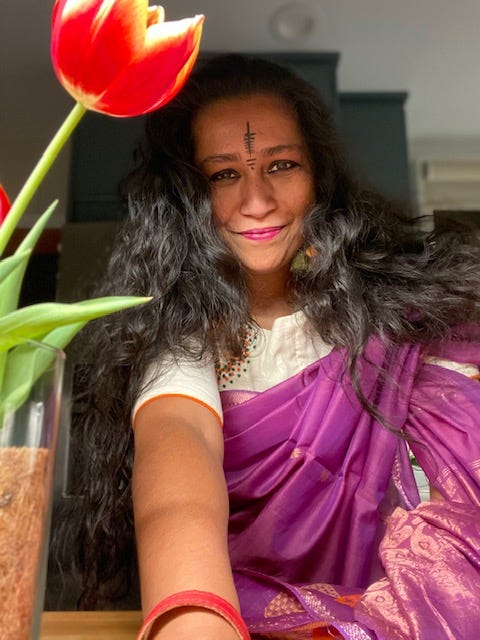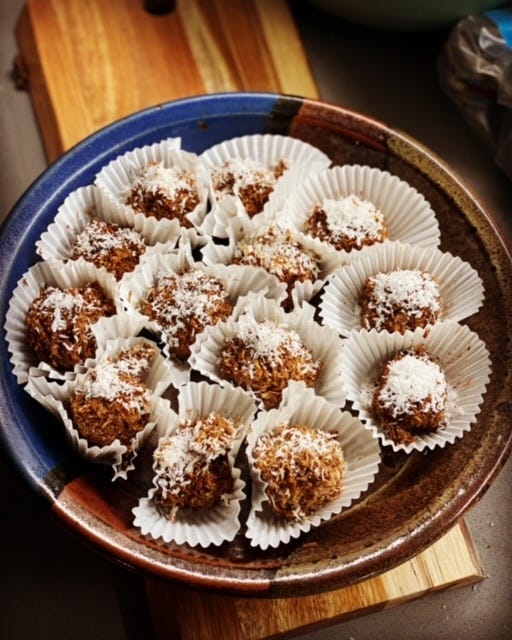Post-Inaguration
Are we waiting for the other shoe to drop?
I thought to reach out mid-week, and one week after the jewel-tone colorful overcoat takeover of Washington, DC last Wednesday. Here’s what I have to say about that—that’s a regular desi wedding, so you people getting all excited about the purple and blue and yellow, you know, make some desi friends, go to their weddings or their kids’ weddings, dance like you mean it, eat like you can handle the spice, and wear some color. The world needs more color—literally, figuratively and in every possible way.
Naturally, we all celebrated in different ways—with food, with more purple or burgundy, but then, some of us did not because we didn’t want to. And that’s okay too. Remember 2016 and then January 2017? No? You erased it from your memory, didn’t you? Yes, you did, but you remember. So here’s what I ask of you after you read this—tell me how you felt after say, 48 or 72 hours?
Once the excitement of a female Vice-President, a daughter of immigrants, a Black woman with South Asian roots, a Dr. Biden, a First Lady who believes in education, a President with a gaggle of happy grandkids—after all that passed, and they went to work like they promised us they would—how did you feel? (Be honest)
I don’t know about you, but there was a moment of waiting for the other shoe to drop. That, my friends, is (post)-Election Stress Disorder (ESD) from the past five years. Not four. At least five. You don’t want to remember every day you woke up dreading but having to check, “What did he do now?” and then to figure out what community organizing meant for some of us who never had, what writing to our lawmakers meant, what canvassing was. We do have mental health professionals scolding us, telling us, don’t call this ESD, it isn’t a disorder, it’s just angst. Well, then, we’re all angsty, mental healthcare peeps!
Regardless of party affiliations, this country has been through a lot and January 6th 2021 (more on that later next month) has given all of us pause. If you haven’t acknowledged that yet, I suggest you do. You did it. We lived through it. Congratulations. Let’s celebrate, let’s continue to be alert, let’s organize because our lives depend on it. Our lives always have, we lost our way for a bit, five years ago.
#GirlGab Friday
Here’s what #girlgab Friday was —a nod to Vice-President Harris, and a paler shade of her overcoat color. For those of you who are reading this newsletter for the first time—it’s been 46 weeks since I hugged a human. For 45 Fridays, I have Zoom-hungout with my friends as we wait for the pandemic to abate. It’s been about half that time that I have worn a sari for that Friday virtual get-together—it started as a joke and now it’s serious business (no, not really, it’s still silly). You’ll see me play grown-up in saris, honoring Indian textile weavers, and as always, my Ma.
Sari Time: A Ma Story
Okay, this is Ma’s sari. So here we go, a story about Ma. My mother loves, loved sweets. Beeye bari, or weddings were her jam. We all loved wedding food—what’s not to love? In the seventies and eighties, the children were fed first. We sat in line, and kolaa paata, or banana leaves were placed in front of us as disposable plates. We started with pulao, rich daals, cauliflower curries, two types of fish, then chicken, and goat curry, ending with sweet chutney—tomato or mango, followed by mishti. Mishti, for all you non-Bengalis, is what we lived for. Sweets. Dessert. Milk/ricotta-based, fragrant with cardamom, jaggery and pistachios or cashews. Swimming in a sticky sweet sugar syrup or a milky sauce. Bengali sweets are what we live for. But this story is about my Ma. By the mid-eighties, Bengali weddings changed—they became ‘westernized’. Chittaranjan Park, my neighborhood in South New Delhi, had Swapan, the neighborhood sweet(s) man (oh, you dirty perv, not THAT kind of sweet). He decided to start his catering business—what? A ‘sweets man’ making entire meals? Would he succeed? Did we watch him in anticipation? Yes, why yes we did!
Swapan succeeded brilliantly. He also soon had competition, but he was good. The weddings had all the food in fancy steel warmers with flames underneath, wait staff in serious white uniforms serving us kababs and samosas with fancier tongs. It was the advent of ‘boofay’ style wedding food. We learnt to eat with spoons and forks. We used plates instead of banana leaves. We stood and ate, and used napkins to wipe our faces like classy people.
My Ma was smarter though. She didn’t spend any time eating all the food. She headed straight to the mishti stand—rosogollas, chomchoms, ladykini, shondesh. Yes, she blessed the newly-weds, but c’mon, we were there for the food. Ma used to fill up on dessert. That’s my Ma.
The sari I’m wearing in this photo—she was the one who wore it the last time. There is a sugar stain on the pallu. I’d like to think it was at a wedding that she ate a rosogolla and a bit of sugar syrup fell on it. The stain is still there. I wore my Ma’s sari just the way it was, is. Sometimes, food connects, even when it’s been over a decade. Sometimes grief transforms into joy and hums within.
Food
And yes, to end with food, because why not? In Bengali, we call it mishti mukh—sweeten the mouth, or to start sweet new beginnings. We can only hope.
Here’s a modified version of the Bengali naroo I made to celebrate—much like the diversity and mixture of genes that makes up this country (and world)—this is coconut with organic molasses, coconut milk mixed with rich cacao.
May we begin sweet. May we hold onto hope. May we relearn to be kind.
Hugs,


